
The Spanish conquistadors “found” everything. Except for a handful of countries, all of the Americas were at one point under Spanish rule. Beginning with Cristopher Columbus and continuing for over three centuries, the Spanish Empire would expand across the Caribbean Islands, most of South and Central America and much of North America.
Today, many of the historically indigenous communities show the effects of the Spanish crusades. You can see the effects by the number of Catholic churches in even the most of rural indigenous communities.
In the small Mexican town of San Juan Chamula, you can experience first hand a modern day hybrid of indigenous ritual and Christianity.
The effects of the Spanish Crown on the Western Hemisphere can not be underestimated. They ‘discovered’ everything. Well, almost everything. They never found one place:
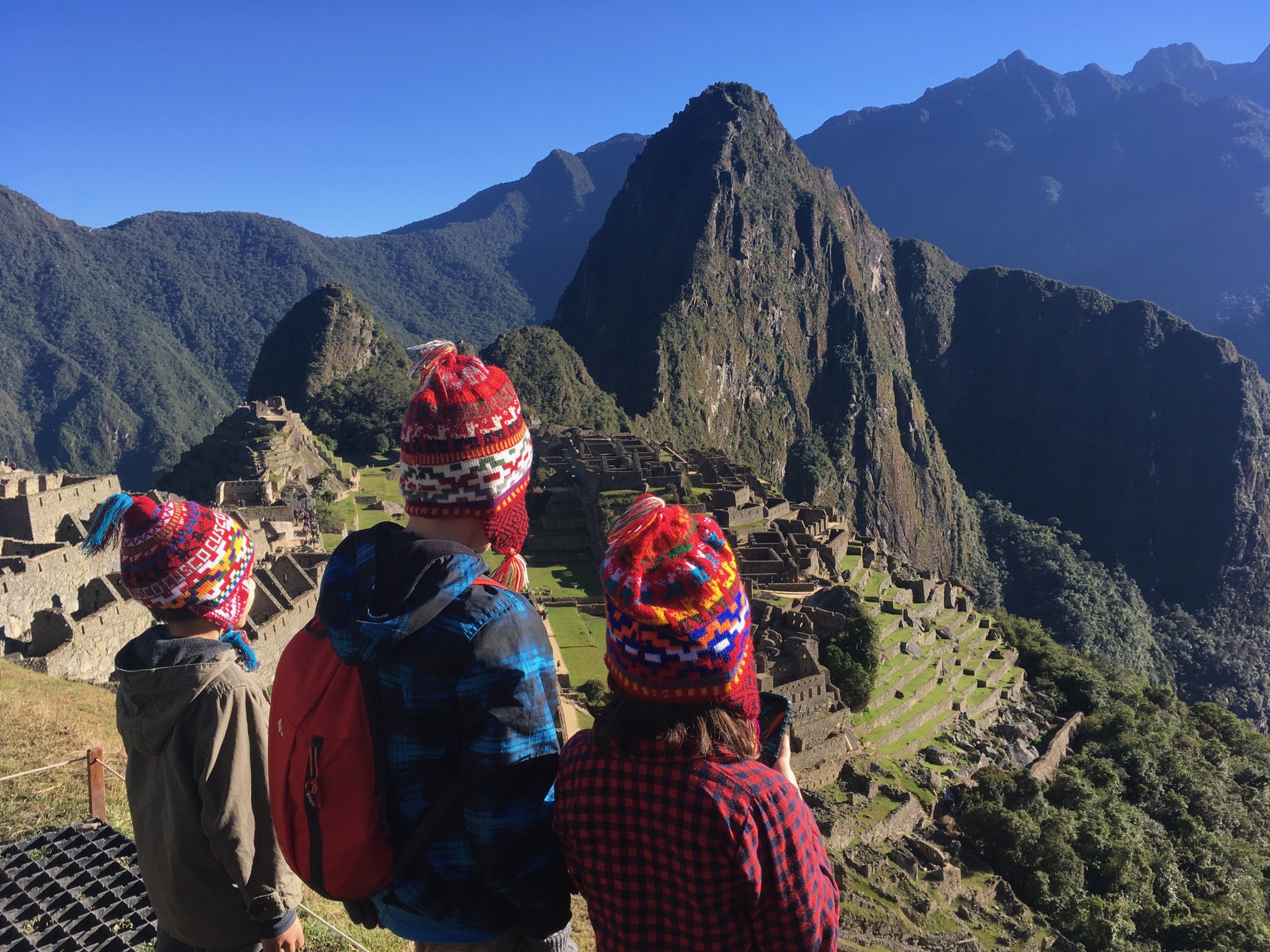
Machu Picchu
After a fun week through Uruguay, it was time to get into some serious adventuring. We left Punta del Este and headed back to the Carrasco International Airport in the Uruguayan capital of Montevideo. We caught our 5-hour flight to Lima, Peru and we were on our way. After a short layover in Lima, we took another plane to Cusco. Cusco serves as the starting point for most tourist looking to venture into Machupicchu. It’s the closes airport and biggest city before embarking. Surprisingly though, although it is the ‘closest’, it is still pretty far. We’ll get to how to get there in a moment.
But first, let’s talk about Cusco for a bit…
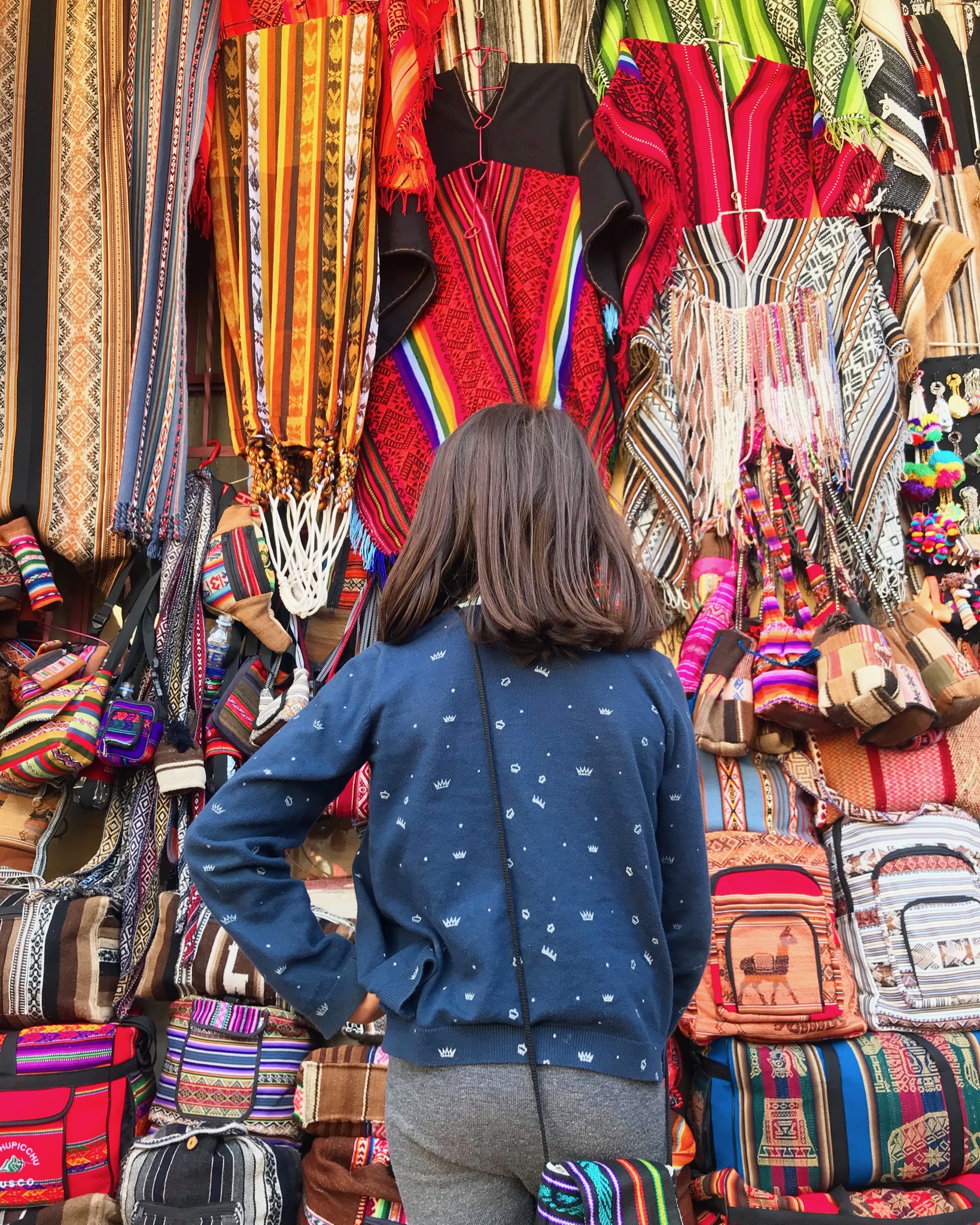
Cusco
Cusco was a welcomed change of pace from the large metropolitan cities of Montevideo and Buenos Aires.
In planning for our trip to Machupicchu, we read up on tips for a successful trip. One of the tips that came up over and over again was to arrive at least a couple of days ahead of your Machupicchu visit to get acclimated to the high elevation.
I’m glad we listened.
Cusco is situated at 11,152 feet (3,399 meters) above sea level. Our bodies took notice within a few hours of landing. By the following day, I was nursing a mild headache and our kids were nauseous. Fortunately it wasn’t too bad but the possible effects should not be taken lightly.
We spent the next three days exploring the town, eating absolutely delicious Peruvian cuisine, Lomo Saltado anyone? We even got a chance to watch Peru’s third and final World Cup game at a local restaurant. The pride the country felt for their team was palpable. After 36 years of not qualifying for the World Cup, they did so this year!

Saltado de Pollo 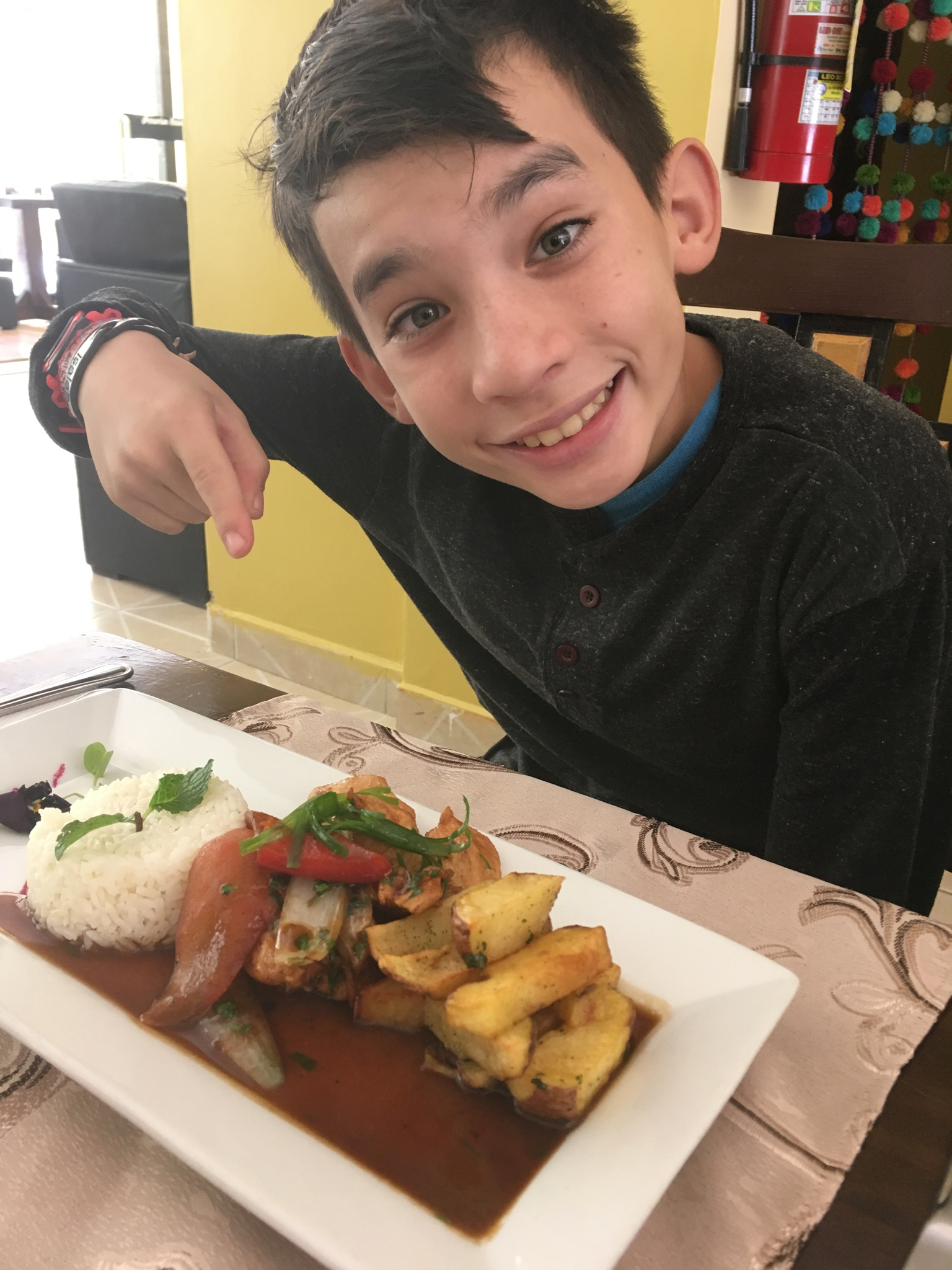
His fave! 
You want to be loved the way he loves this desert. 
Ceviche is Peru’s specialty. 
Local beer!
How to Get to Machu Picchu
One thing that no matter how many different sites and blogs we visited, still left us a bit confused was how exactly do you get to Machu Picchu. The reason it’s so confusing, we found out first hand, is there are quite a number of ways to get there. The easiest, most straight forward way is to buy an ‘All Inclusive’ tour package. However, that can get costly real quick. I write ‘all inclusive’ because it really isn’t. The entrance tickets to Macchu Picchu are sold only by a couple of government offices in Cusco and at the actual entrance.
We decided to break up the cost and purchase everything as we went. Here in detail, is exactly how we did it with a few notable alternatives.

Costs, Fees and Waiting
*You should buy your Maccupichu entrance tickets ahead of time. We bought them in Cusco a few days before we visited MP.
We booked a Cusco AirBnB for 7 nights.
- On day 4, we took the ‘Machupicchu By Car’ option
- 7am shuttle on a 6hr. drive takes you to ‘Hydroelectric Station’ ($120 roundtrip for the 5 of us, just the minibus)
- Alternatively, you can purchase PeruRail tickets directly from Cusco to Machupicchu Town (~$150 per person roundtrip but only 3hrs each way)
- At Hydroelectric Station, we purchased train tickets to get to Machupicchu Town ($210 roundtrip for 5 of us, this is a 25 minute train ride)
- Alternatively, you can hike along the train tracks for about 2.5hrs. You see many backpackers doing it. No cost.
- We stayed the night in a hotel ($90 for two rooms)
- Arranged at Hotel guide for following morning. $30 for the 5 of us as part of a 15 person group (you MUST enter with a tour guide)
- Alternatively, you can get a private tour guide for about $25 per person
- Arranged at Hotel guide for following morning. $30 for the 5 of us as part of a 15 person group (you MUST enter with a tour guide)
- This same day, we bought roundtrip bus tickets from Aguascalientes to the entrance of MP (~$100 for all five of us)
- 7am shuttle on a 6hr. drive takes you to ‘Hydroelectric Station’ ($120 roundtrip for the 5 of us, just the minibus)
- The next morning
- Met with tour group at 5:45am
- With bus tickets purchased the night before, we got in line at 6:15a
- Hopped on bus and by 7:30a were at the entrance to MP
- Alternatively, you can take a 2hrs hike up to the entrance. Many people do this to be the first ones in the park.
- Spent the first hour with the tour guide and then about 2 hrs. exploring the site
- At about 12p, took the bus back down Aguascalientes (about a 30min ride)
- Had lunch and walked about the souvenir shops
- 1:30p took the PeruRail train back to ‘Hydroelectric Station’
- 2:30p left Hydroelectric Station back to Cusco on minibus
- 9pm arrived in Cusco and back to our AirBnB
- *phew!*
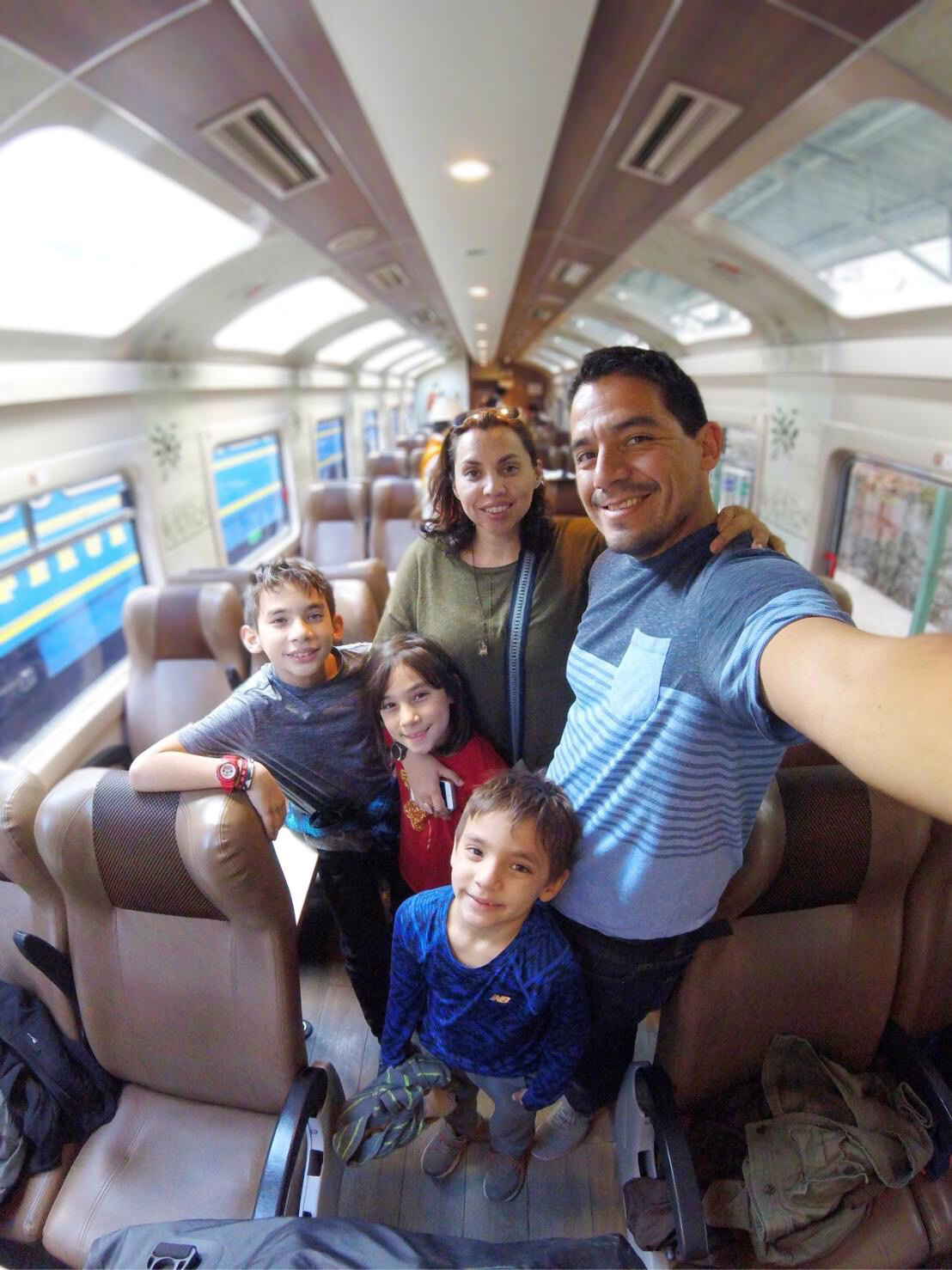
Would We Do It Again?
All things considered, it took us approximately 40 hours to get to Machupicchu and back – all for just under three hours at the actual site. And you know what? IT WAS MORE THAN WORTH IT.

Their first look 
Making dreams come true 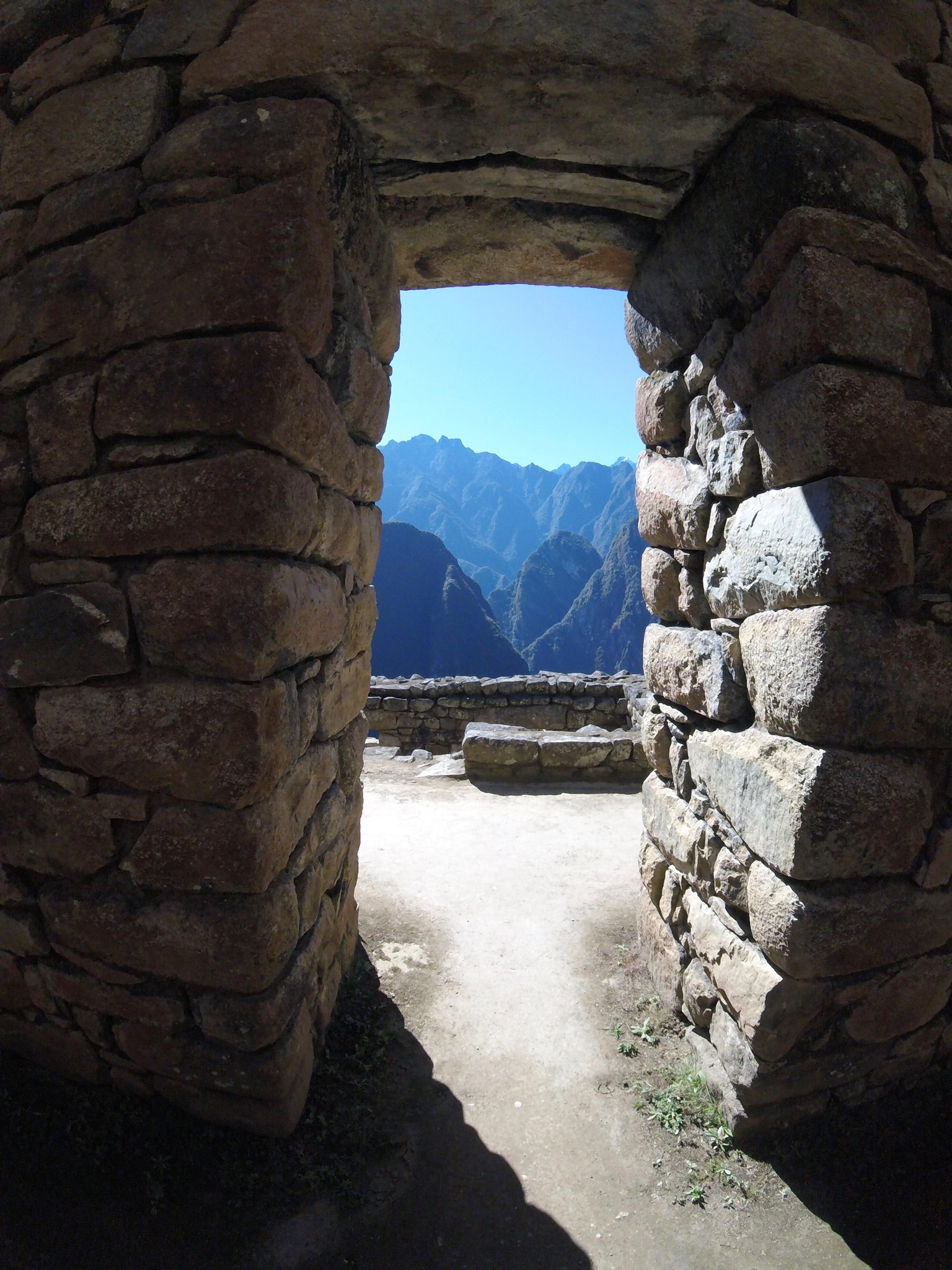
Beauty at every turn 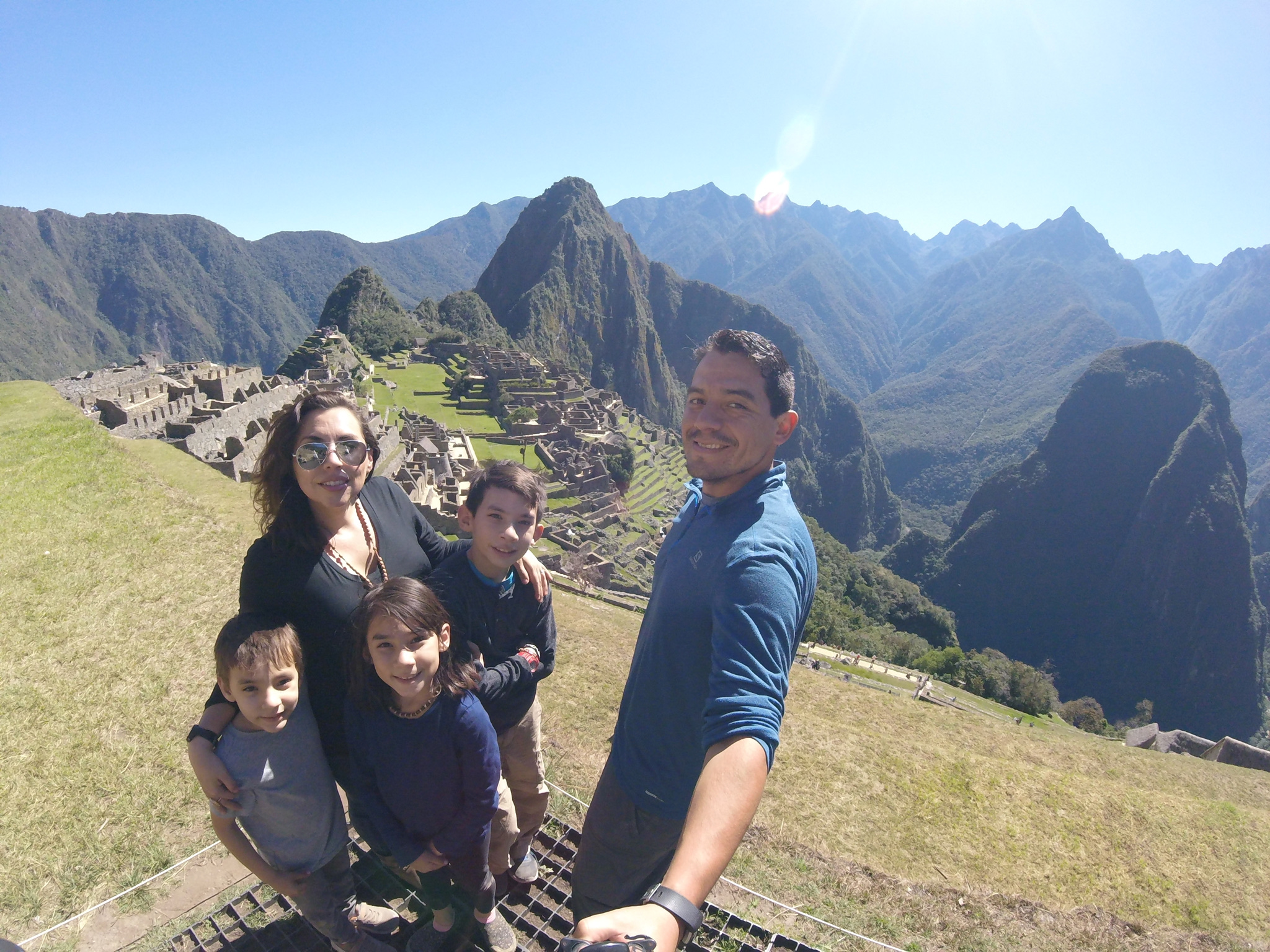
Queventure!
When our family first decided to sell everything we owned and go on this wild adventure, these types of experiences are exactly what we had in mind. It was truly a spectacular place. From a ‘making-dreams-come-true’ standpoint, it doesn’t get much better than this.